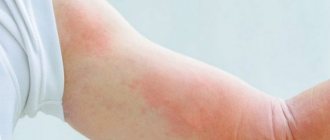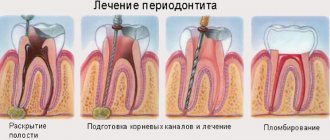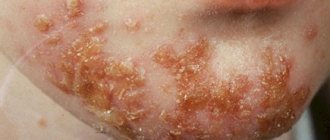Vitiligo is a skin disease that is still not fully understood. This disease causes mental and aesthetic discomfort to the patient in our not very tolerant society.
The disease is included in the group of skin dyschromia. Normally, human skin color has 4 pigments:
- Melanin creates a brown tint;
- Carotene is responsible for the yellow color;
- Reduced hemoglobin has a blue tint and is contained in venules;
- Hemoglobin, which is saturated with oxygen, has a reddish color and is found in capillaries;
The change in skin pigment that is characteristic of vitiligo appears due to the fact that there is too little or too much melanin. Doctors are working to find out the cause of the disease, and cosmetologists offer their own method - tattooing.
It consists of introducing paint into the device, which masks the white spots. The method is applicable only for small areas, and only masking occurs, but the person is not cured.
Vitiligo is an acquired disease, but it has been found that it can be transmitted genetically.
The disease was previously called “piebald skin”, “leukopathy”, “white spot disease”. “Vitiligo” is translated from Latin as a deficiency. The occurrence of vitiligo does not depend on race, but on black people the spots appear quite clearly.
Causes
Researchers believe that vitiligo skin spots are formed due to a disruption in the production of melanin in the melanocytes of the skin. This process can be predicted, since such destruction has its own reasons.
Due to little knowledge of this disease, many patients, having received the appropriate diagnosis, ask the question “vitiligo, what is it?” In medical practice there is another name for this pathology. White patches on the skin are called leucoderma. Translated from Latin, it means white skin. The disease has very ancient roots; previously such people were considered to have leprosy.
Statistics say that this disease affects up to 1% of the world's population. Researchers have not been able to establish the exact causes of infection, but pathology is not picky in choosing a victim. Both representatives of the Negroid and Caucasian races suffer from vitiligo. On dark skin, blemish marks look much more noticeable. More than half of the cases of disease development occur in the age period from ten to thirty years.
To date, scientists have not established the exact cause of vitiligo, but they have developed several versions about its origin:
- The disease is caused by a virus and entered the body due to weak immunity.
- Autoimmune disease. This means that due to a malfunction of the immune system, one’s own cells are accepted as foreign. All this leads to their gradual destruction. The cells responsible for pigmentation and giving human skin its natural color die, causing white patches to appear in areas.
- Transmission by inheritance. The causes of this type of vitiligo are based on statistics, because in 40% of cases the disease passes from parents to children. This mode of transmission may be associated with a malfunction at the gene level, when cells are programmed to have a low level of immune system. For this reason, spots on the skin will appear after suffering a serious illness, such as diabetes or problems with the thyroid gland.
- Other scientists see the causes of vitiligo in disruptions of the endocrine system. Such failures lead to abnormal functioning of the pituitary gland. According to researchers, serious injuries, such as to the head, can trigger the disease. Others point to the possibility of spots forming due to incorrect functioning of the gonads or adrenal glands.
- Nervous system disorders. Researchers believe that the disease can be triggered by severe stress, shocks and everything that negatively affects the functioning and condition of the nervous system.
- A vulnerable psyche can trigger vitiligo in young children and adolescents. White spots may appear on the skin due to fright or severe fear, excessive irritability.
- Parasitic intoxication.
- Lack of iron and copper in the body.
During the research, scientists were able to establish that such a disease can manifest itself in people who, due to their professional duties, interact with chemicals. It is worth noting that all these are theories and versions, but in practice, the skin disease is poorly understood and scientists do not have enough information about the exact mechanism of operation and the reasons for the appearance of white spots.
Description
Vitiligo is a skin disease characterized by the formation of light areas on the skin that lack the natural pigment melanin.
Vitiligo develops in approximately 1% of the world's population. Most often it debuts between the ages of 10 and 30 years. This disease is not dangerous, but may indicate the presence of serious pathologies. Therefore, the issue of thorough diagnosis and treatment must be approached with all responsibility. When you detect the first symptoms, you should consult a dermatologist.
Depending on the location of the formations, the following forms of vitiligo are distinguished:
- focal - the appearance of one or several spots on one part of the body;
- segmental - skin lesions are observed in several adjacent areas;
- zosteriform - the formation of a large number of spots that are localized in a small area of the skin;
- mucous – damage to the mucous membranes;
- acrocephalic – formations are localized on the face, hands and feet;
- ordinary - multiple spots are placed on the body in a chaotic order;
- mixed – a combination of several forms of vitiligo;
- universal – damage to large areas of the skin, which leads to almost total depigmentation.
Causes of vitiligo:
- autoimmune disorders in the body. In this case, disturbances in the functioning of the immune system are observed when produced antibodies attack healthy cells of the body;
- genetic predisposition. Vitiligo is transmitted from parents to children in 15–40% of cases;
- neuroendocrine disorders;
- violation of skin trophism. In this case, vitiligo appears after various damage to the skin (cuts, burns, etc.);
- negative effects of certain toxic substances on the skin.
The prognosis for vitiligo is favorable. In 30% of cases, self-healing is observed under the influence of certain factors. It is important to understand that the affected areas of the skin are exposed to sunlight, which can cause serious burns. Therefore, it is extremely important to protect the areas of the body where vitiligo is located from the negative effects of the sun.
Symptoms of the disease
Vitiligo on the hands
Vitiligo, the symptoms of which become noticeable from the first day, is expressed in white spots on the skin with clearly defined boundaries. Qualified dermatologists identify several areas where blemishes occur most often:
- Around the mouth;
- In the ear area;
- Near the eyes and nose;
- On the arms and legs;
- In the groin and anus area;
- In men, they can appear on the head and in the beard area, specifically on the hairline of the body;
Read also:
News in the treatment of vitiligo 2016
Despite the clearly described appearance, the spots that appear on the skin can have different characters and characteristics. The skin disease vitiligo can manifest itself as:
- Bluish tint of spots;
- There is slight swelling and elevation in the area of the spot;
- The spots have pronounced pigmentation and are noticeably different from the general complexion;
- The contour between the infected skin area and the healthy one is clearly defined.
Lightening eyelashes on the site of vitiligo
Speaking about other symptoms of skin disease, it should be noted that vitiligo can manifest itself as a complication or consequence of one of the ailments:
- Nest-type baldness;
- Choreoretinitis;
- Lightening or graying of hair may appear on the affected areas of the skin;
- Scleroderma;
- Psoriasis;
- Lichen planus;
- Chronic diseases of the gastrointestinal tract;
- Dermatitis;
In addition, there is no sweating on the affected areas of the skin, the ability to feel cold and respond to pain is reduced. Particular attention should be paid to the functioning of the liver and kidneys, since when affected by the disease, it is much more difficult for the body to fight toxins.
The most serious problem for patients remains their appearance and cosmetic skin problems. Doctors do not recommend that such people spend a lot of time in the open sun, because the diagnosis becomes more noticeable on tanned skin.
Symptoms
The best way to show the symptoms of vitiligo is a photo. This process can be described in words as follows: white spots (depigmented areas of skin) appear on the human body, which can have completely different sizes and shapes, and even merge. Distributed throughout the body, most often on the arms, legs, face and head (hair also becomes discolored).
It is these spots that are the main symptom of the development of vitiligo. The internal organs remain unchanged, the structure of the skin is not disturbed, the disease is characterized only by a change in the shade of the dermis. As a side effect, only mental disorders can be identified, because carriers of the disease experience complexes and suffer because of their appearance (vitiligo, initial stage - photo in the article below).
Stages of vitiligo
Vitiligo on the face of a girl with dark skin
To date, researchers have identified several stages of the disease. Here are the main ones:
- Progressive. This is indicated by the rapid growth of the spot, as well as the resumption of an increase in the volume of old depigmented areas. New lesions may appear very slowly, for example, new ones will begin to form around one spot within three months. Dermatologists note that vitiligo usually develops slowly, but there have been cases when the patient’s body became covered with spots in a matter of days.
- Initial. At this time, one single spot may appear on the skin. Depending on how the disease progresses, the initial stage will develop into one of the other stages of the disease.
- Stationary. It implies the presence of one spot in a sick person, which does not decrease in growth and does not spread lesions to other areas. At this time, the person is under the supervision of a dermatologist, who will immediately record a shift in vitiligo in a positive or negative direction.
- Repigmentation. Such cases are extremely rare. The spots completely disappear from the skin, but this happens due to the spontaneous adoption of special medications prescribed by a dermatologist. Cases of complete healing are extremely rare and experts have not yet established a universal medicine that would work with 100% accuracy.
Treatment
We come to the next logical question: is vitiligo treated in modern dermatology? Medicine today presents a wide range of means to solve the problem. In the absence of specialized therapy, progression of the pathological process is inevitable. Let's look at the main drugs that are used:
- Glucocorticoids. This group of medications suppresses allergic reactions and autoimmune processes in localized and generalized forms. These include ointments “Cutivate”, “Beloderm”, “Elocom”, drugs “Prednidosolone”, “Dexamethasone”, “Triacort” and their analogues.
- Plant furocoumarins. This includes “Elokom”, “Psoralen”, “Puvalen” and others. Good results are obtained with the use of the drugs “Protopic” and “Elidel” (as a rule, they are prescribed to solve complex problems when, in addition to the underlying disease, psoriasis and dermatitis are diagnosed).
Good news for those who are wondering how to cure vitiligo forever: modern researchers have developed effective measures to combat the disease. Recovery can only be achieved with systematic complex therapy, which is aimed at combating disorders of hormone synthesis, associated health problems, depression, and so on. Frequently used methods include the following techniques:
- Laser therapy. Areas of depigmentation are exposed to laser radiation with waves of a certain length (a similar technique with a similar principle of action is phototherapy). The method gives the best effect for patients suffering from local forms.
- Skin whitening. Tone leveling is performed using specialized dermatological products - Hydroquinone, Elokvin and Monobenzone. Please note that these drugs are potent and aggressive, the dosage must be carefully selected by the doctor, and for correct prescription it is necessary to undergo a detailed examination.
- Melanocytic transplantation. Autotransplantation and surgical intervention can help patients if the disease has affected limited areas. However, there is a high risk of developing rejection after transplantation and suppuration, so the decision on the need for the procedure should be made by an experienced specialist.
- Transfer of the patient's melanocytes from one part of the skin (undamaged) to another (damaged).
In some cases, comprehensive in-depth diagnostics makes it possible to identify the factors/conditions that provoked the disease. Regardless of the treatment methods used, patients need to monitor their diet - eat more food containing copper. This includes apples, seafood, cabbage, rice, and corn.
Types of vitiligo
Many doctors and researchers still cannot answer all the questions about what vitiligo is, but in their study they have identified a classification of spots and other changes that appear on the skin. These include:
- Mixed form, when several forms of the disease are combined, for example acrofascial, vulgar or segmental;
- Total, when the total volume of affected skin is up to 80%;
- Vulgar, when the spots are spread over all parts of the body;
- Acrofascial, in which spots appear only on the face or limbs;
- In mucosal leukoderma, only mucosal areas of the body are affected;
- Segmental is concentrated in a specific area, for example, the head;
- The focal form implies a small number of spots that are dispersed in different areas.
Let us pay attention to the fact that despite the defectiveness of the affected areas and the disruption of a number of processes, the skin does not dry out or peel off. Based on the types of stains, four types can be distinguished:
- Spots of three colors that have a clear outline and boundaries;
- Spots of four colors with an outline;
- Spots that have a blue tint;
- The boundaries of the spots are slightly raised.
Read also:
Treatment of vitiligo, news 2020
Vitiligo: causes and treatment, what causes it and how to stop it?
When it comes to vitiligo, most doctors are not optimistic about the prognosis of the disease and its treatment. This is primarily due to the fact that this disease, despite its centuries-old history, is very poorly studied. Mostly hypotheses are put forward as the causes of occurrence, but the effectiveness of treatment in most cases leaves much to be desired.
Specifics of the pathology
Vitiligo is a skin disease characterized by the formation of predominantly white spots on the surface of the skin. For this reason, it belongs to leukoderma, as manifestations of depigmentation that accompany some diseases are called. Translated from Greek, this word literally means “white skin.”
These spots are depigmented areas of the skin resulting from a lack of melanin. This phenomenon occurs in approximately 1% of the world's population, and people of both sexes and any age are susceptible to it. However, according to statistics, women still suffer from it more often. In addition, the peak appearance of vitiligo occurs between the ages of 10 and 30 years.
So, this disease has one main symptom and several minor ones. By secondary symptoms we usually understand such sensations in the area of depigmented areas as:
- decreased sensitivity to various stimuli, including temperature;
- lighter hair in the affected area;
- disruption of the process of sebum secretion and sweating;
- the occurrence of solar dermatitis.
The main symptom remains white spots on the skin. They can be located in any part of the body, but most often they form:
- in the area of the knees and elbows;
- on the hands and feet;
- in the armpits;
- in the groin area;
- on the face (around the eyes, nose, lips).
This pattern is explained by the fact that the areas of skin listed above are most susceptible to traumatic effects (friction, excess sunlight, etc.). However, spots can appear in any other place, including mucous membranes. Most often, a single spot appears first, which can subsequently develop in three possible directions, namely:
- freeze unchanged;
- increase in size and/or quantity;
- disappear on its own or as a result of treatment.
Unfortunately, the last option is the rarest of those listed. Most often, the disease develops according to the second scenario, i.e. spots spread throughout the body, appear in new areas, and in some cases cover the entire surface of the skin, as a result of which it becomes completely depigmented.
Development factors
Regarding this disease, many speech patterns of uncertain meaning are used, such as “maybe”, “not excluded”, “possibly”, etc. Indeed, it is impossible to predict or prevent its occurrence; when it comes to vitiligo, the reasons for its appearance are put forward in the form of hypotheses; no one speaks with certainty about how to cure vitiligo. There are many methods used in this capacity, which, however, do not provide any guarantees and resemble more an experiment than an effective treatment.
Reasons for the development of vitiligo
Perhaps the only point that does not raise doubts or difficulties in this case is diagnosis. For this purpose, the patient is examined and the clinical picture is analyzed, as well as skin scraping microscopy and light microscopy. A Wood's lamp is used to identify stains that are not yet visible to the eye. As a result of transillumination of the skin surface, possible ripening foci of the disease are detected, and a prognosis for its development is made.
It would be more fair to call the causes of the disease known for vitiligo as disposing factors, which include:
- hereditary predisposition;
- neuroendocrine disorders;
- mental disorders;
- exposure to chemical compounds;
- disorders of the autonomic nervous system;
- use of medications;
- lack of an enzyme involved in the synthesis of melanin, etc.
And this is not a complete list of possible causes, to which you can add burns, microtraumas, as well as scars, friction, etc. There are cases where a spot appeared after drug therapy and disappeared after some time after stopping the drug, but these examples are extremely rare. The most convincing version is a hereditary factor. Most often, people suffering from this disease have a family history of similar cases.
You should know: there is a possibility of psychosomatic causes of this disease. According to the theory of Louise Hay, the psychosomatics of vitiligo consists of a feeling of complete alienation from the world around us.
Given the uncertainty described above, the question arises, is it possible to cure vitiligo completely, are there any new methods for the current year, 2020? It is necessary to consider in detail all the existing new means and methods used to treat vitiligo in Russia and in the world, find out how to behave correctly with this disease, whether there are dietary restrictions, and if so, what foods are allowed and what are not. The main thing in this case is not to retreat, despite the difficulties, but after the recommendations of the attending physician, begin therapy, because every year of delay reduces the chances of success.
Methods of treating the disease
How and where is vitiligo treated? As mentioned above, this disease has been little studied, but this does not mean that the scientific community has abandoned attempts to understand it, quite the opposite. And although there is still no complete clarity regarding therapy for vitiligo, treatment already includes several quite promising methods:
- treatment of vitiligo with ultraviolet light (using a lamp with ultraviolet radiation);
- treatment of vitiligo with laser (possible if vitiligo lasts less than 5 years);
- phototherapy for vitiligo;
- skin transplantation from a healthy area (risk of complications);
- melanocyte transfer (pigment cells move from healthy areas to damaged ones).
Application of ultraviolet
It should be noted that an ultraviolet lamp is one of the most effective means of combating this disease. There are several varieties of this device, differing in the type of emitted wave. Not only the effectiveness of treatment, but also the list of contraindications to it depends on this parameter. A lamp with narrow-wave radiation is considered the safest and most effective in this case. Unconditional contraindications to this method include:
- melanoma;
- cataract;
- lack of lens;
- autoimmune diseases.
There are many nuances that must be taken into account before using this method. In particular, the duration of the procedure, which depends, among other things, on the thickness of the skin at the site of radiation exposure. If the permissible time is exceeded, undesirable reactions may occur, such as dry skin, itching, burns. Typically, the duration of one procedure is from 2 to 5 minutes.
The treatment complex consists of several procedures, in some cases their number can be more than one hundred.
Drug therapy
However, the treatment of the disease is not limited to this. Firstly, it is recommended to combine various options for influencing depigmented areas, and secondly, along with the listed methods, medications of various effects are used. For example, if an ultraviolet lamp is used, the following medications are prescribed to increase the sensitivity of pigment cells to radiation:
- Lamadin;
- Beroxan;
- Methoxalene;
- Puvalen;
- Psoberan;
- Meladinine;
- Oxoralen et al.
Various external agents are used as preparations against the stains themselves (Protopic, Elidel, etc.). A specialist should explain how to treat vitiligo with ointments and gels, since independent choice and uncontrolled use of these products can be harmful to health.
In addition, the doctor will determine the required dosage taking into account the age and individual characteristics of the patient, and will also determine the total duration of treatment, which can be several months, in some cases a year. Not every remedy can be used for such a long period.
In addition to those listed above, there is the drug Melagenin Plus, which is successfully used to treat localized foci of vitiligo. In general, the type, form and stage of the disease are not the least important for the choice of treatment methods. It is a great success to determine the causes of the pathology in vitiligo. If any are identified, their elimination will largely determine the outcome of the therapy. For example, if the cause of the disease is exposure to a chemical substance, vitiligo may disappear after eliminating contact with this irritant.
What do you need to remember?
We should not forget that this disease is often accompanied by other disorders, dysfunctions and diseases. Accordingly, treatment should be comprehensive and include all the drugs necessary for each case. Especially often problems arise in the functioning of the thyroid gland, as well as in the field of mental disorders.
You should be aware that a disease such as vitiligo sometimes takes more than one year to treat, and sometimes cannot be treated at all, so you need to be patient and not give up.
Vitiligo is treated in various ways, where compliance with certain nutritional requirements is not the least important. The diet for vitiligo, in the full sense of the word, has not been formed. People suffering from this disease are advised to eat foods rich in copper and zinc, for example:
- rice;
- corn;
- cabbage;
- seafood;
- apples;
- oats;
- tomatoes, etc.
Nutrition for vitiligo should be complete, enriched with vitamins and minerals. It is also necessary to closely monitor the state of the nervous and endocrine systems, and treat diseases in this area in a timely manner, especially if there is a possibility of inheriting vitiligo.
doloypsoriaz.ru
Diagnosis of the disease
Diagnosis of vitiligo is made based on the clinical picture of the disease, a patient interview and a doctor’s examination. If there are few spots and the disease is difficult to establish, then the person may be referred for a biopsy to obtain additional data.
The results of the study will demonstrate the level of melanocytes and record changes in collagen fibers. It is these two indicators that clearly indicate that a person has vitiligo. In order to give an accurate diagnosis, it is necessary to exclude other diseases, for example:
- Albinism;
- Melanoma;
- Atopic dermatitis;
- Leucoderma for syphilis;
- Trichophytosis;
If signs of the disease are detected, you need to seek help from a doctor and establish an accurate diagnosis, after which the patient will be prescribed comprehensive treatment. Despite the absence of physical discomfort from the disease, vitiligo can be harmful to a person and has an impressive list of consequences if treatment is ignored.
Is it possible to prevent the disease?
The body is unpredictable, and it does not think at all that a person may have vitiligo. The best prevention is to monitor your diet and health. If it is known that there were patients with such a skin pathology in the family, it is important to avoid exposure to sunlight (use protective creams with a high level of SPF), follow a diet and eat more foods rich in vitamins and other useful elements.
For a long time, vitiligo has remained a poorly understood and difficult to treat disease. But there is always a chance for recovery, and no matter how much time passes, you cannot give up and stop therapy.
Consequences of the disease
One of the main problems associated with the disease is psychological pressure. Vitiligo is known to cause spots on the face, hands and body. Because of this, a person feels constant shame, develops self-doubt, complexes, depression and apathy. The patient tries not to go out and avoids people. They are haunted by constant stress and bad mood.
Speaking about the physical harm that the disease will bring, we can mention disruption of the thyroid gland. Doctors have drawn a clear parallel and found that spots appear on the skin several months before a serious hormonal imbalance occurs in the body.
If the disease is not treated, it can worsen due to stress and a general depressed psychological state. There have been cases where the number of spots increased due to severe stress experienced.
Etiology and pathogenesis
The etiology and pathogenesis remain unclear. Infectious and intoxication theories are not able to explain the cause of the spots. In 10-20%, and according to some researchers in 40% of cases, Vitiligo is a family disease. Most researchers are inclined to the neuro-endocrine theory of the occurrence of Vitiligo, which is supported by numerous observations of the development of Vitiligo after neuropsychic trauma, and the frequent combination of Vitiligo with endocrine pathology (thyrotoxicosis, Addison's disease, hypothyroidism, ovarian dysfunction). Disturbances in the functional state of the adrenal cortex and thyroid gland were also noted in a number of patients with Vitiligo. Skin depigmentation is explained by blocking the enzyme tyrosinase, which plays an important role in pigment formation, as well as complex autoimmune processes occurring in the patient’s body.
Vitiligo is never congenital. Most often, the first lesions of Vitiligo appear in childhood and adolescence. In many cases, Vitiligo spots appear during puberty and menopause, often after childbirth and abortion, during pregnancy.
Workers in the rubber and formaldehyde resin industries may develop occupational vitiligo.
Treatment of vitiligo
If a person has white spots on his skin, the first thing he should do is consult a dermatologist. He will prescribe the necessary medications, establish the stage and nature of the development of vitiligo and give all the necessary advice on treatment. It is important to make an accurate diagnosis, because vitiligo can be confused with other skin diseases, and improper treatment will only aggravate the situation and may cause harm to the patient.
To date, there is no medicine that could eliminate all the consequences of the disease on the skin. Treatment of vitiligo is carried out with the help of antioxidants and is aimed at preventing the development of spots and reducing their visibility. Immunomodulators are often prescribed, which have a positive effect on the human immune system.
Laser therapy for vitiligo
Depending on the number and nature of the spots, the doctor may refer the person to ultraviolet irradiation of the skin, which is carried out in doses. The list of procedures includes PUVA therapy and laser treatment of the skin. In medical practice, there have been cases when they tried to cure this disease surgically by transplanting melanocytes grown in the laboratory onto the affected area. You can wipe the skin with alcohol tinctures of various medicinal plants prescribed by a dermatologist.
Dermatologists recommend that patients with vitiligo take hormonal medications, vitamin complexes, as well as vitamins A and E. They can get the disease moving and show good results. However, before taking hormonal drugs, you need to visit an endocrinologist who will examine the person, prescribe the necessary drug, the use of which without exceeding the dosage will not harm. Self-medication is fraught with complications that will cause much more trouble to the body than vitiligo.
Vitiligo on a child's hand
Endocrinologists recommend taking hormonal medications belonging to the group of adrenal hormones for vitiligo. It is worth taking special care in taking them, dosage and duration of the course, so as not to harm the body even more. This applies primarily to young children and adolescents, whose bodies continue to form and develop (approx.
Vitiligo - what is it? + photo
vitiligo disease photo of age spots
Vitiligo is a disorder of the metabolism of the skin pigment melanin, which is classified as focal hypopigmentation. There are also conditions of hyperpigmentation, for example, the well-known ordinary freckles, but we will talk about them next time.
The extreme version of hypopigmentation is the complete absence of melanin. This condition is called albinism. We will talk about this extremely interesting phenomenon later.
Why does vitiligo occur? Before we talk about the reasons, we need to remind you why the color of a person’s skin depends.
Why are we "colored"?
Deep in our skin there are special cells - melanocytes. In their organelles, namely bodies - melanosomes, melanin is synthesized. For its appearance, the amino acid tyrosine is needed, and this process is catalyzed by the enzyme tyrosinase.
Copper takes an active part in this enzyme. This is how the “basic” process of melanin formation occurs, for example, in winter. In summer, the process is activated under the influence of ultraviolet rays.
It is clear why this happens: the shorter the wavelength, the more energy the quanta of electromagnetic radiation have. The near-ultraviolet region is the last of the high-energy regions that is beneficial to humans, and only in reasonable quantities. Next comes hard ultraviolet, deadly x-ray and gamma radiation.
The process of melanin formation occurs in several stages, through the synthesis of promelanin. Melanocytes themselves are nothing more than mature melanoblasts. As soon as tyrosinase activity increases in a young pigment cell, the number of melanosomes in it increases and it begins to produce melanin.
But there are cases, for example, in albinos, when there are many melanosomes in the cell, but melanin production does not begin. In the case of vitiligo, such a failure in the process of melanin synthesis occurs spontaneously. Why is this happening?
Folk remedies against vitiligo
Homeopathic doctors are convinced that vitiligo should be treated with the help of traditional medicine, because plants contain all the necessary substances to restore the skin. For example:
- Alkaloids;
- Vitamins;
- Tannins;
- Polysaccharides;
- Microelements;
All this has a positive effect on the body and normalizes processes such as cell regeneration, metabolism and photosynthesis. There is an opinion that with the help of traditional medicine you can activate skin pigments and get rid of white spots on the face and throughout the body. For this reason, homeopaths recommend taking not only herbal infusions, but also the drug “Ammifurin”, having first read the instructions.
You can drink it for no more than 21 days, after which you can completely switch to herbal remedies. The course of treatment with breaks of 20 days can last about two months. Speaking about medicinal herbal recipes that help get rid of vitiligo, we suggest that you familiarize yourself with the following tips:
- The medicinal tincture is made from a mixture of herbs: St. John's wort, string, oregano, sage leaves, nettle, chamomile buds. All this must be taken in equal measure and mixed, then transferred to a thermos and filled with two liters of boiling water. The medicine should be infused for twelve hours. Then you need to strain it and pour it into a separate bowl. The finished medicine should be taken half a glass before meals, no more than twice a day. In parallel with this, another tincture should be taken, made in a 1:1 ratio from valerian and aralia. Please note that medicinal tinctures purchased at a pharmacy should be used, and not prepared with your own hands.
- The infusion is made from garden parsley seeds and lemon juice. The proportions should be 1:3. The resulting tincture is rubbed into the affected areas of the skin on the face, hands and body.
- A fairly popular folk remedy made from ordinary dandelion. A tincture or ointment is prepared from the roots of the plant. Tincture recipe: four tablespoons of crushed dandelion roots are poured with boiling water and infused for three hours. After this, the medicine should be strained into a bowl, drunk warm before eating, half a glass three times a day.
Despite the fact that vitiligo has not been fully studied by scientists, today there are methods to stop the development of the disease and partially remove spots from the skin. If symptoms of the disease appear, you should consult a doctor and undergo a medical examination.
Diagnostics
It is quite easy to distinguish it from another disease, especially to a doctor. The white spots on the skin remain normal, that is, there is no itching or flaking, the skin is smooth. Diagnosing the disease is also easy because the human body becomes like a geographical map with unusual figures from discolored areas. The most common areas are located on the face and neck, in the genital area, on the hands, forearms, wrists and knees.
Disease prognosis
However, dermatologists are in no hurry to give a favorable prognosis regarding the recovery of their patient. Medicine is developing rapidly and today it is possible to stop the growth of spots by providing medicinal and therapeutic effects on them, but a means to get rid of spots has not yet been completely invented. The only consolation for the patient can be that vitiligo causes only cosmetic inconvenience and does not affect the functioning of the body in any way.
We hope that the article answered your question, “What is vitiligo?” and gave comprehensive information about this disease.
This video will answer all remaining questions:
Prevention
There are no specific preventive measures for vitiligo, but after the painful symptoms are eliminated, certain rules should still be followed:
- avoid prolonged exposure to the sun;
- use high-quality cosmetics that do not harm the skin;
- competently create a daily diet that must include fruits and vegetables;
- do not injure the skin;
- give up alcohol and smoking.
It is also very important to avoid stressful situations.
How to treat vitiligo and what are the causes of its appearance?
Causes
It is impossible to name specific causes when talking about the causes of vitiligo. There are only rough assumptions that have some indirect confirmation. Only one thing can be said for sure: changes in the skin arise from incorrect enzyme reactions, mostly reduced. Correct reactions contribute to the production of the required amount of melanin, and in case of illness, its production is significantly impaired and tyrosinase activity is reduced. Also, in patients with vitiligo with a negative DOPA reaction, the quantitative norm of melanocytes is fixed without disturbances.
There are examples when the disease appeared in a person who had viral hepatitis A or other liver diseases. In addition, vitiligo can be caused by worms. It should also be noted that there is a hereditary factor; the risk of transmitting the disease from parents to children is quite high. In general, with vitiligo in children, often at least one parent is already sick with the pathology.
Symptoms
Vitiligo is a chronic disease and outwardly it is expressed in pale pink or milky spots on the human skin. Gradually, the spots become larger in size and are usually oval in shape. The external manifestation of the disease does not cause any unpleasant sensations. Any part of the body can be covered with spots, but the arms, legs, and face are more affected. If the spot is located on the head, then the hair also changes color, becoming bleached.
The disease is hereditary: it is known that the malfunction of the human immune system is influenced by the gene that provokes the development of the disease. Most often, vitiligo is accompanied by some other autoimmune disease. The occurrence of the disease and its progression can be influenced by the following negative factors:
- chronic gastrointestinal diseases;
- various injuries;
- infections;
- toxic reactions.
The disease can appear simultaneously with such ailments as baldness, lichen planus, and psoriasis. In addition to the external manifestations of the disease, it is difficult to notice problems in the general condition of the sick person. The spots may periodically become smaller or disappear completely, and then reappear. Doctors do not recommend that such patients be exposed to the sun much or often. At the beginning of the disease, pinkish or white spots gradually begin to appear on the skin. Over time, they increase in size and take on different shapes. Then the spots can merge into one whole, forming lesions. As a rule, spots are localized on unprotected areas of the skin: on the arms, neck, face. Our readers recommend!
For the treatment of pimples, acne, acne, blackheads and other dermatological diseases caused by adolescence, diseases of the gastrointestinal tract, hereditary factors, stressful conditions and other reasons, many of our readers successfully use Elena Malsheva’s Method. Having familiarized ourselves and carefully studied this method, we decided to offer it to you.
It is noted that the spots “like” to be located symmetrically, but damage to one side is possible. Often in patients you can see the location of spots along the nerve trunks. Due to the lack of melanin, the affected areas stop responding to external stimuli, especially cold air. When the entire skin of a person is depigmented, we can talk about the maximum manifestation of the disease.
How to treat vitiligo
Treating vitiligo is not an easy task. After all, it is necessary not only to rid the patient of spots on the body, but to treat the entire body as a whole. The root of the disease lies in failures in the production of melanotropic hormone. It is responsible for the presence of a pigment called melanin in the body. The production of this hormone occurs in the pituitary gland.
Treatment for each patient must be individual, but in any case, it will take more than one month. Recovery is influenced by factors such as the environment in which the patient lives, his lifestyle, and much more. There are cases when the disease subsides after several sessions. The main rule here is to avoid prolonged exposure to the sun, especially traveling to hot countries.
Treatment consists of using special mixtures and ointments, as well as taking chemicals. Ointments help increase skin sensitivity to ultraviolet radiation. The mixture should be rubbed only into damaged areas of the skin. The most effective drugs include the following:
- ammifurin;
- Beroxan;
- psoberan;
- meladinine;
- immunal;
- activin;
- Echinacea.
The basic principle is to force the human body to produce the required amount of melanin without the help of drugs. Another direction in the treatment of the disease is the use of ultraviolet irradiation and photochemotherapy (used in many areas of cosmetology). Usually several sessions are prescribed at certain intervals. But among the many modern treatment methods, there are also those that give fairly quick results. This is a laser treatment that is much more effective than photochemotherapy. This method has no side effects, and the products used include components such as vitamin C and copper. After all, patients have an acute shortage of these elements in the body. In addition, another method is the use of photosensitizing agents.
Nutritional Features
A patient with vitiligo must adhere to a special diet, since a special diet in combination with traditional and alternative medicine will help the body fight the disease more effectively. Metabolism must be correct to support the body during the treatment process.
You should eat a lot of plant foods. Especially worth mentioning are cabbage, spinach, celery, parsley, bell peppers, lemons, apples, peaches, and strawberries. Rosehip decoction has a good effect on the patient. Every day you need to eat a few grams of figs, washing it down with water. You can drink specially prepared juice from potatoes, carrots and parsnips (1:1:5).
Seafood, mushrooms, and legumes contain a sufficient amount of copper in their composition, so they should also be included in the diet of a patient with vitiligo. Sugar should be replaced with sweet fruits and berries, and foods such as chocolate, coffee, alcohol, spicy, smoked and canned foods should be completely excluded. Instead of black tea, you should drink green tea with mint or lemon balm.
Traditional methods of treatment
You can fight vitiligo quite effectively with the help of folk remedies. The most famous are the following:
St. John's wort
Pour boiling water over two tablespoons of dry products and leave. Strain and squeeze the resulting infusion. The decoction must be rubbed into skin that does not have normal pigmentation. Repeat the procedure two to three times a day.
Walnut
Clean a few pieces and add alcohol to leave. Apply the resulting tincture to damaged areas of the skin. The course lasts 2-3 months.
Geranium
Pour geranium root (with burgundy flowers) with a liter of boiling water and let it brew for several hours. The resulting decoction can be added to water while taking a bath. The course lasts two weeks.
Red clay
With due patience, it will help restore the skin to its healthy color. The clay is mixed with ginger juice 1:1, and then the resulting mixture is applied to the affected areas. Red clay is mined from the bottom of rivers. It contains a large amount of copper, a deficiency of which in the body is noted in patients with vitiligo. Ginger promotes blood flow to the upper layers of the skin. Also, water infused in a copper bowl helps a lot.
Parsley seeds
If the disease has affected the face, then the best folk recipe for treatment is considered to be a decoction of parsley seeds. It is diluted with lemon juice 1:1 and rubbed into damaged areas.
Melon
Melon does a good job of improving pigmentation. The melon pulp should be squeezed out and the resulting juice should be smeared on the affected areas of the skin.
You can expect a good effect only with an integrated approach to solving the problem. This should include treatment with chemicals, new developments in the field of aesthetic cosmetology, proper nutrition and the absence of negative external factors. A radical but expensive treatment for vitiligo is considered to be a surgical method - donor skin transplantation. But this method is used only in the West so far.
prishistop.ru










